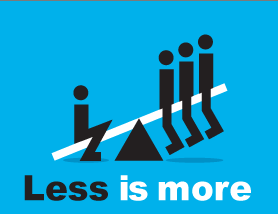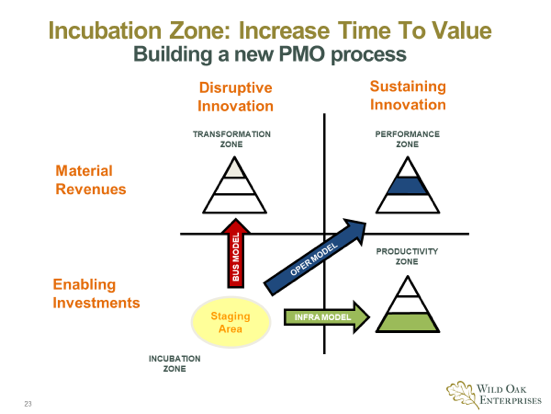
July 24, 2018
In the digital world,
sometimes less is more.

The Business Case for Demand Management
Most if not all organizations no longer have the capacity to meet the accelerating demand from their customers, employees, supply chain partners and other key stakeholders for faster, friction free ways to engage and connect. From product development to marketing to sales to customer service and IT, teams with limited resources and budgets are stretched to the breaking point to try and keep up with unprecedented increases in demand.
Against this backdrop, I was interested to read the results from a recent research study by the Hackett Group that analyzed how companies attempted to “tame project demand.” The study focused on what top project management performers did better than their peers:
- The largest gap between top performers and others was in the project vetting stage where top performers were able to reduce the percentage of project requests by 44% compared to their peer group. Using inclusive project governance tools, up-to-date business case templates and transparent project request logs, top performers green-lighted an average of 38% of project requests over the past two years vs. 69% for their peers.
- This up-front demand management discipline had the cumulative effects as follows:
- Growth in project volume over the past two years at top performers averaged 19% vs. 39% for the peer group
- Resources required to service project demand rose only 5% at top performers vs. 19% at the peers
- Top performers delivered 66% of their projects on time vs. 45% for their peer group
The results of this research suggest there is a strong business case to be made that the key to improved project management performance is less is more.
Getting it right up front will increase time to value

One of the major implications of this unprecedented acceleration in demand for new digital tools like social, mobile, cloud, data analytics and smart devices is that companies are looking to compress their product/application development release cycles. Simply put, how they can go from 6 to 12 months to 6 to 12 weeks to 6 to 12 days to 6 to 12 hours.
Many companies are deploying different development processes and tools including Agile, Lean or DevOps to increase their time to value. The mantra is fail fast and learn fast. While this approach certainly has some merit, well over half of current IT development projects still miss their deadlines and come in over budget.
Over the past several years, I’ve had the opportunity to work with several companies to help them build a demand management discipline and set of repeatable processes to significantly improve their time to value and throughput on their development projects.
A foundational component of this work has been our 4 Zone Model framework which has been deployed as shown below:

Early adopters have used the 4 Zones framework to segment their new product and application projects in the following way:
- Are they sustaining innovations or disruptive innovations?
- Are they enabling systems productivity and cost optimization?
- Are they increasing business unit performance and revenue growth?
- Are they enabling business model transformation?
This process results in the creation of a project development portfolio which can be used to prioritize and align future IT investments with mutually agreed upon critical business outcomes. It has also been instrumental in redeploying scarce resources and budget away from lower value run the business projects to higher value change the business projects.
In addition, instead of using resource capacity and budgeting constraints to make prioritization decisions, the following three questions are used to help make go no go decisions:
- Should we do it? Does it align with and support critical business outcomes?
- Can we do it? Do we have the relevant skills, capabilities and tools to achieve the desired outcome?
- Did we do it? Do we have the right metrics upfront to measure the achieved outcomes vs. the desired outcome?
This approach moves project prioritization decisions from a budget exercise to a business value creation exercise that helps clarify when it makes sense to say no not yes.
Project Development Process Success

What does it take to make this demand management process work? Here are some criteria to consider:
- An agreement that no project will start until all the key stakeholders have committed to participate from the beginning to the end of the development cycle
- A common understanding of what needs to be done to deliver the ultimate user experience to customers, employees, supply chain partners or other key stakeholders
- Replace inside-out user interface thinking with outside-in user experience thinking
- A mutually understood vocabulary and taxonomy to discuss and resolve build or buy trade-off decisions
- A willingness and desire to learn, grow and change while on the journey to the final outcome
- Plan Long – Execute Short
- A series of metrics that align project investment priorities with critical business outcomes
Early practitioners of this demand management process have significantly increased their time to value and have greatly reduced the costs of do-overs or extended release schedules driven by unclear or changing project requirements.
Since anyone reading this blog is likely to be headed into next year’s planning and budget cycle, I’m happy to discuss with you how this approach has helped my clients take control of their own destiny and avoid being whipped sawed by outdated corporate protocols.
As always, I am interested in your comments, feedback and perspectives on the ideas put forth in this blog. Please e-mail them to me at pdmoore@woellc.com.


